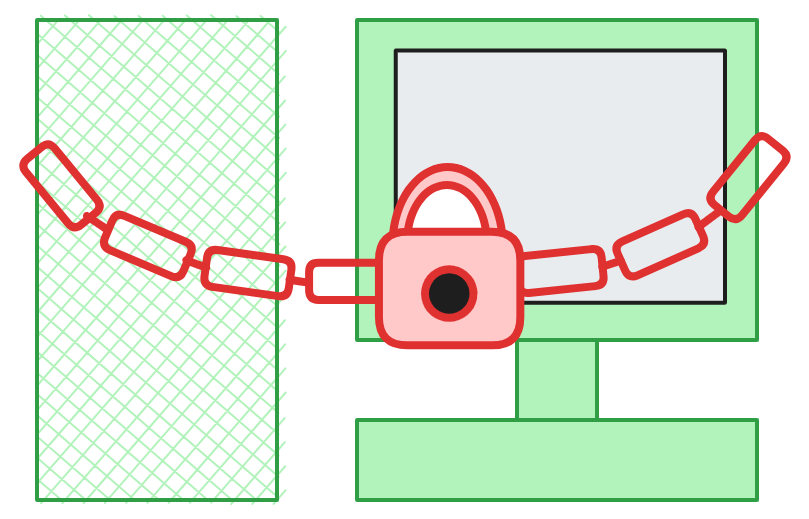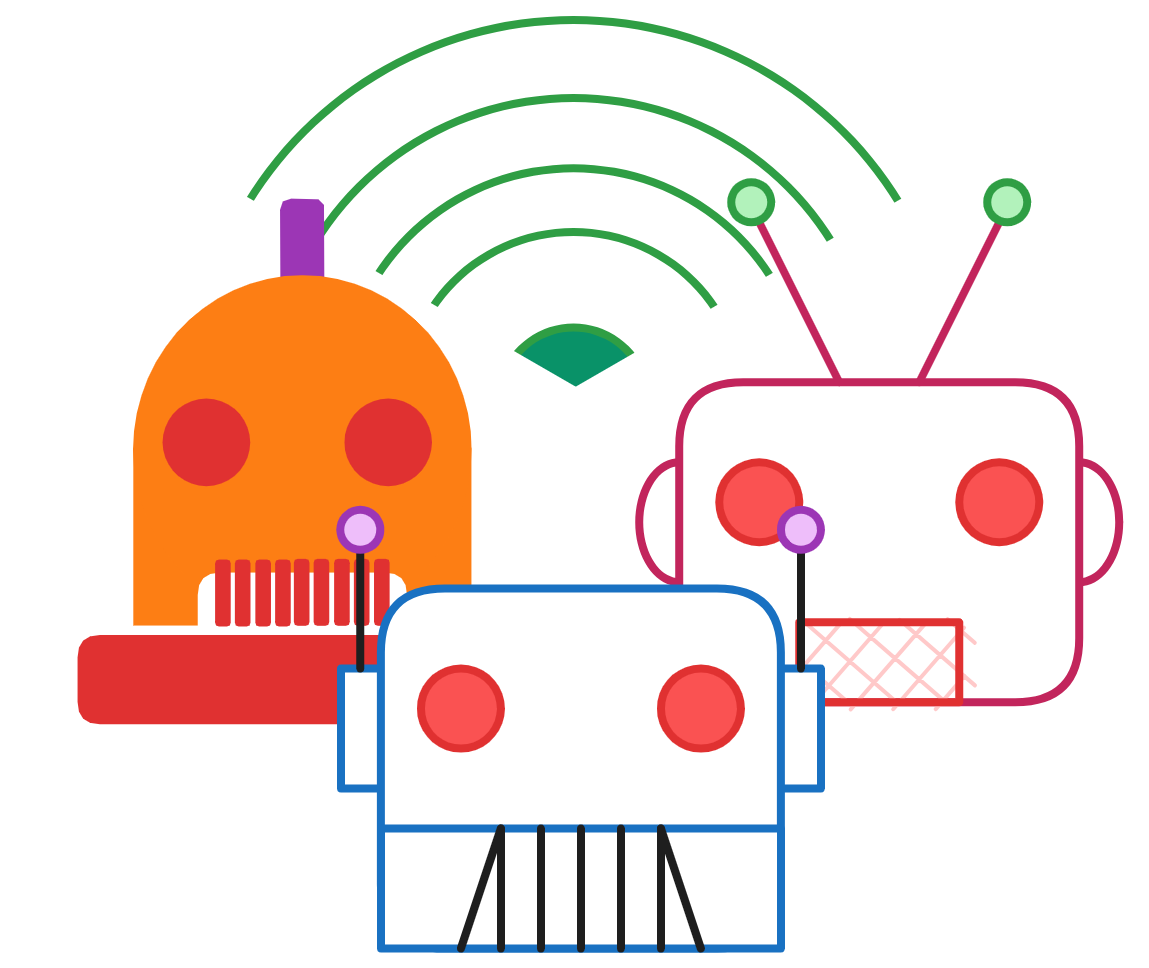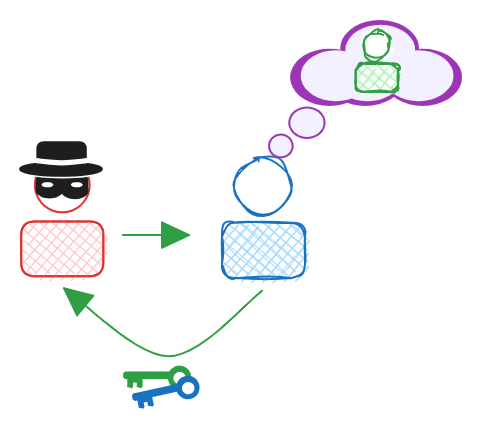IT and Cybersecurity Interview Questions
As we navigate the complexities of the digital revolution, the realms of Information Technology (IT) and cybersecurity have emerged as pivotal foundations across diverse sectors. The ongoing digital metamorphosis of businesses, paired with the dynamic lifestyle of modern consumers, underscores the urgency of safeguarding sensitive data and ensuring a seamless operational framework.
The relentless surge of cyber adversities, ranging from the menace of ransomware to the treachery of data breaches, has heightened the demand for adept professionals. These individuals should not only possess an in-depth understanding of IT intricacies but also be equipped to foresee, thwart, and tackle cybersecurity menaces.

What are some common network protocols and what are they used for?
TCP/IP is the core protocol of the internet and transport layer protocol used for connection oriented communication. UDP is a transport layer protocol used for connectionless communication. HTTP is an application layer protocol used for web traffic. FTP is used for file transfers.
What is a firewall and how does it work?
A firewall is a network security system that monitors and controls network traffic based on a set of security rules. It acts as a barrier between internal trusted networks and external untrusted networks like the internet. Firewalls filter traffic going in and out of the network and block malicious attacks and intrusions.

What is the difference between symmetric and asymmetric encryption?
Symmetric encryption uses the same key for both encryption and decryption, whereas asymmetric encryption employs a pair of public and private keys.
How do you define a man-in-the-middle attack and its prevention?
A man-in-the-middle attack intercepts communications between two entities without their knowledge. Utilizing SSL/TLS certificates from trusted sources can prevent such attacks.
Describe a denial of service attack and its common types.
A denial of service attack aims to render a resource inaccessible by overloading it or exploiting vulnerabilities. Examples include buffer overflow, ping flood, and SYN flood attacks.
How does ransomware operate?
Ransomware encrypts a system's files, demanding a ransom for decryption. It often spreads via phishing emails or malicious website downloads.

What is the purpose of a vulnerability assessment?
Vulnerability assessments scan networks and applications for security weaknesses, aiding organizations in identifying and prioritizing vulnerabilities for remediation.
Describe AES encryption.
The Advanced Encryption Standard (AES) encrypts data in 128-bit blocks using symmetric keys. It employs multiple rounds of data transformations to produce ciphertext from plaintext.
Explain the functionality of a firewall.
A firewall monitors and controls traffic based on predefined security rules, preventing unauthorized access and potential threats from malware.
Why is multifactor authentication important?
Multifactor authentication (MFA) enhances security by requiring multiple verification methods, reducing the utility of stolen credentials.
Can you explain the CIA triad in cybersecurity?
The CIA triad outlines the three pillars of information security: Confidentiality, Integrity, and Availability. These principles aim to guard against unauthorized access, modification, and service disruptions.
Why is risk management vital in cybersecurity?
Risk management involves recognizing, assessing, and mitigating cyber risks. This process is essential for efficiently defending organizations from threats while optimizing resource allocation.
How does a distributed denial of service (DDoS) attack work?
A DDoS attack overburdens systems with excessive traffic from multiple sources. These attacks often utilize botnets, or networks of compromised devices, to intensify their impact.
What is the role of encryption, and what are some popular algorithms?
Encryption transforms data into a format unreadable without a specific key, ensuring data confidentiality. Widely used algorithms include AES, Blowfish, RSA, and SHA.
What is multi-factor authentication and why is it important?
Multi-factor authentication (MFA) requires multiple credentials to verify a user's identity during login. This provides much stronger defense by making stolen credentials less valuable to attackers.
What is a honeypot in the cybersecurity landscape?
A honeypot is a decoy system designed to attract cyber attackers. It diverts their attention from genuine assets and provides insights into their tactics, techniques, and procedures.
How do firewalls ensure network security?
Firewalls regulate traffic between internal and external networks based on security rules. They block unauthorized access and malware, ensuring only legitimate communication occurs.
What is a distributed denial of service (DDoS) attack and how does it work?
A DDoS attack overwhelms systems by flooding them with traffic from many sources. It leverages botnets of compromised devices to amplify the scale of the attack. Defenses include upstream filtering and anti-DDoS services.
Describe penetration testing and its significance.
Penetration testing involves security experts emulating cyberattacks to assess an organization's defenses. This proactive measure helps pinpoint vulnerabilities before they're exploited by malicious actors.
What is a honeypot in cybersecurity?
A honeypot is a decoy system intended to attract and monitor cyber attacks. They distract adversaries from real systems and provide insight into their TTPs for improving defenses.
How can ransomware threats be mitigated?
Ransomware encrypts data until a ransom is paid. To defend against it, users should be trained, systems kept up-to-date, backups secured, anti-malware software employed, and file execution restricted.
When and why should you use a virtual private network (VPN)?
A VPN conceals your internet traffic and location by encrypting it. It's especially useful on public Wi-Fi or when transmitting sensitive data to guard against eavesdropping.
How does SSL/TLS protect against man-in-the-middle attacks?
SSL/TLS combats man-in-the-middle attacks by mandating trusted certificates for establishing encrypted connections, ensuring secure communications between parties.
What is the purpose of firewalls and how do they work?
Firewalls control traffic between internal and external networks based on security rules. They prevent unauthorized access and malware while allowing legitimate communication to occur.
What is IP spoofing and its role in cyberattacks?
IP spoofing disguises the actual source IP of network packets. Cyber attackers use it for DDoS attacks, evading firewall rules, or concealing their identity.
Explain a zero-day exploit and its potential dangers.
A zero-day exploit targets vulnerabilities that are unknown to the vendor or public. These vulnerabilities can be widely exploited before patches become available, making swift responses crucial.
What is IPsec and how does it provide secure networking?
IPsec provides encryption, integrity, and authentication at the IP packet level. It is used in VPNs and for protecting internet communications.
Describe the principle of least privilege and its importance.
The principle of least privilege grants users only the permissions they need. This minimizes potential damage from errors or malicious actions.
How does a virus differ from malware?
While a virus is a type of malware that replicates itself by infecting host files or disks, malware encompasses all malicious software types, such as viruses, worms, ransomware, and Trojans.
Define infrastructure as code and its security benefits.
Infrastructure as code (IaC) employs code and automation tools for infrastructure management, ensuring consistent, reproducible deployments and centralized security measures.
Describe the zero trust model in cybersecurity.
The zero trust model assumes that breaches are inevitable and hence verifies all connections, even inside the network. It employs strict access controls, isolation techniques, and encryption to hinder unauthorized movement within systems.
What is a web application firewall (WAF)?
A WAF monitors and filters web traffic based on specific rules, protecting web applications from threats such as cross-site scripting (XSS), SQL injection, and DDoS attacks.
How does OAuth differ from traditional authentication models in enhancing security?
OAuth delegates authentication to trusted third parties, eliminating the need to store user credentials at multiple sites. Moreover, OAuth provides better encryption and limited access scopes compared to password-based models.
Define a password spray attack and its countermeasures.
In a password spray attack, attackers attempt common passwords across numerous accounts. Countermeasures include enforcing strong, unique passwords, using multi-factor authentication, and monitoring repeated login failures.
What is cross-site scripting (XSS) and its prevention measures?
Cross-site scripting (XSS) injects malicious scripts into web applications, jeopardizing user data. Implementing measures such as input validation, data escaping, and using CORS headers can mitigate XSS risks.
Explain a brute force attack and its defense mechanisms.
A brute force attack involves trying all possible password combinations to gain unauthorized access. Using complex passwords, implementing account lockouts, and employing multi-factor authentication can deter such attacks.
How does role-based access control (RBAC) bolster security?
Role-based access control (RBAC) limits system access based on the roles of individual users. By ensuring users only access what they need, RBAC minimizes risks associated with excess privileges.
Describe a botnet and its operation.
A botnet is a collection of compromised devices controlled by a remote attacker. These networks facilitate large-scale, coordinated attacks, such as distributed denial of service (DDoS) attacks.

Differentiate between IPv4 and IPv6 in IP addressing.
IPv4 employs 32-bit addresses, while IPv6 uses 128-bit addresses, offering a vastly expanded addressing capacity.
Why is two-factor authentication considered more secure than just passwords?
Two-factor authentication enhances security by requiring a second verification method, such as a one-time passcode, alongside the password. This approach significantly diminishes the value of stolen passwords to attackers.
Define personally identifiable information (PII) and its significance.
Personally identifiable information (PII) includes any data that can identify an individual, such
as names or social security numbers. Protecting PII is paramount to prevent identity theft and other fraudulent activities.
What is a logic bomb, and how might it be employed maliciously?
A logic bomb is a piece of malicious code set to activate under specific conditions. One malicious example might be code designed to delete files if a particular employee's status changes.
Describe a vulnerability disclosure program and its advantages.
A vulnerability disclosure program allows ethical hackers to report security flaws they discover, ensuring organizations can fix these issues before malicious actors exploit them. This collaboration benefits both parties and improves overall cybersecurity.
How does software-defined networking (SDN) enhance network security?
Software-defined networking (SDN) uses software to manage and configure network infrastructure dynamically. This flexibility improves threat monitoring and enables swift configuration changes in response to threats.
Define session hijacking and its preventive measures.
Session hijacking involves taking over an existing user session to gain unauthorized access to a system. Implementing measures like requiring re-authentication for sensitive actions can prevent such attacks.
What is data loss prevention (DLP) and its primary function?
Data loss prevention (DLP) solutions monitor and control data transfers to prevent unauthorized data exposure or breaches. They identify and protect sensitive information, ensuring it doesn't leave the network without proper authorization.
Explain the role of a Security Information and Event Management (SIEM) system.
A SIEM system collects and analyzes log data from various sources within an organization's infrastructure. It helps in detecting security incidents, monitoring potential threats, and facilitating a rapid response to security breaches.
What makes a salted hash more secure than a regular hash?
Salting a hash involves adding random data to a password before hashing it. This technique ensures that even if two users have the same password, their hashes will be different, thwarting rainbow table attacks.

Describe a buffer overflow attack and its consequences.
In a buffer overflow attack, an attacker sends more data than a buffer can handle, often causing the system to crash or allowing the execution of malicious code. Proper bounds checking and input validation in software development can prevent such attacks.
Explain credential stuffing and its prevention.
Credential stuffing involves using stolen username-password pairs to gain unauthorized access to accounts. To thwart these attacks, organizations should enforce strong password policies, utilize multi-factor authentication, and monitor for repeated failed login attempts.
How does a database firewall contribute to security?
A database firewall monitors and controls traffic to and from a database, based on specific rules. This helps in protecting databases against threats like SQL injection and unauthorized access.
How does DNSSEC enhance the security of the Domain Name System (DNS)?
DNSSEC adds cryptographic signatures to DNS data, ensuring data integrity and source authentication. This prevents attackers from redirecting users to malicious websites through DNS spoofing.
What is the objective of a vulnerability scanner in application security?
A vulnerability scanner systematically checks applications for potential security flaws, such as SQL injection or cross-site scripting vulnerabilities. This proactive approach helps in identifying and rectifying vulnerabilities before they can be exploited.
Describe Public Key Infrastructure (PKI) and its role in secure communications.
Public Key Infrastructure (PKI) provides a framework for digital signatures and public key encryption. By establishing trusted digital identities through certificate authorities and key pairs, PKI ensures secure digital transactions and communications.
How does a proxy server contribute to security?
A proxy server acts as an intermediary between users and the websites they visit. It can filter and monitor traffic, block access to malicious websites, and mask users' IP addresses, enhancing privacy and security.
Why is data classification essential for cybersecurity?
Data classification categorizes data based on its sensitivity, such as public, confidential, or internal. This categorization helps organizations in applying appropriate security measures to protect data commensurate with its risk level.
What is anomaly detection in cybersecurity?
Anomaly detection identifies unusual patterns or behaviors in data or network traffic. Such deviations from the norm can indicate potential threats or cyberattacks.
How does Continuous Integration/Continuous Deployment (CI/CD) integrate security into software development?
CI/CD automates the process of software development, from building and testing to deployment. This automation supports security practices like static and dynamic analysis, infrastructure as code, and swift vulnerability patching.
How does OAuth enhance secure delegated access?
OAuth enables secure delegated access by allowing third-party applications to access user data without needing to store user credentials. Instead, it uses tokens to grant specific, time-limited access rights.
Can you explain RPO and RTO in the context of disaster recovery?
The Recovery Point Objective (RPO) represents the maximum acceptable amount of data loss. The Recovery Time Objective (RTO) denotes the maximum acceptable downtime during outages. Disaster recovery planning aims to align with these business-defined metrics.
Describe bidirectional encryption and its typical use cases.
Bidirectional encryption uses a common private key for both encryption and decryption processes. It's typically utilized in scenarios like encrypted communications between IoT devices and chat applications.
How does a cryptographic hash function support cybersecurity?
Cryptographic hash functions produce a fixed-size hash value from variable-length input data. These functions are pivotal in digital signatures, password storage, data integrity checks, and message authentication, ensuring data security and integrity.
How does a blue team operate in cybersecurity?
The blue team focuses on defense, actively monitoring, detecting, analyzing, and responding to potential cybersecurity threats and incidents within an organization.
What is the significance of endpoint detection and response (EDR)?
Endpoint Detection and Response (EDR) solutions continuously monitor endpoint devices for suspicious activities and potential threats. These solutions provide greater visibility into endpoints, facilitating early threat detection and automated response mechanisms.
Describe IPsec and its role in secure networking.
IPsec offers secure networking by providing encryption, authentication, and integrity at the IP packet level. Commonly employed in Virtual Private Networks (VPNs), IPsec ensures secure communications across potentially insecure networks.
What is a REST API, and how can its security risks be mitigated?
A REST API offers web services using JSON over HTTP. To safeguard against risks such as injection and broken authentication, security measures like input validation, proper authentication mechanisms, rate limiting, and regular vulnerability scanning should be implemented.
What is a storage area network (SAN) and its security benefits?
A storage area network (SAN) is a high-speed, dedicated network that provides access to block-level storage. Its centralized nature makes encryption and access control easier to implement, enhancing data security.
What is a password spray attack and how would you defend against it?
A password spray rapidly attempts common passwords across many accounts. Rate limiting, multifactor authentication, and strong unique passwords per user prevent success.
What is PKI and how does it secure communications and transactions?
A Public Key Infrastructure (PKI) enables trusted digital identity through certificate authorities, public/private keys, and digital signatures, securing connections and documents.
What is a proxy and how can it filter potentially malicious content?
A proxy acts as an intermediary for client requests to servers. It can filter traffic, block access to malicious sites, and conceal internal IP addresses.
One Pager Cheat Sheet
- Common network protocols include TCP/IP used for
connection oriented communication, UDP used forconnectionless communication, HTTP forweb traffic, and FTP forfile transfers. - A firewall is a network security system that
monitors and controls network trafficbased on security rules, acting as a barrier between internal trusted networks and external untrusted networks, and works to filter traffic and block malicious attacks and intrusions. - Symmetric encryption uses the
same keyfor bothencryption and decryption, while asymmetric encryption uses apair of public and private keys. - A man-in-the-middle attack involves intercepting communications between two entities, and prevention typically involves using
SSL/TLS certificatesfrom trusted sources. - A denial of service attack aims to render a resource inaccessible by overloading it or exploiting vulnerabilities, with common types such as
buffer overflow,ping flood, andSYN floodattacks. - Ransomware operates by
encryptinga system's files and demanding a ransom for theirdecryption, often spreading via phishing emails or malicious website downloads. - Social engineering is the manipulation of individuals to reveal confidential information, using tactics such as
phishing,pretexting,baiting,quid pro quo, andtailgating. - The purpose of a vulnerability assessment is to scan networks and applications for security weaknesses, helping organizations to identify and prioritize vulnerabilities for
remediation. - The Advanced Encryption Standard (AES) encrypts data in
128-bit blocksusingsymmetric keys, employing multiple rounds of data transformations to convertplaintextintociphertext. - A firewall
monitors and controls trafficbased on predefined security rules, effectivelypreventing unauthorized accessand potential threats from malware. - Multifactor authentication (MFA) is important because it enhances security by requiring multiple verification methods, thus
reducing the utility of stolen credentials. - The CIA triad in cybersecurity stands for Confidentiality, Integrity, and Availability, representing the three pillars that guard against
unauthorized access,modification, andservice disruptions. - Risk management is vital in cybersecurity as it involves the recognition, assessment, and mitigation of cyber risks, ensuring efficient defense against threats and optimized resource allocation.
- A DDoS attack works by overburdening systems with excessive traffic from multiple sources, often utilizing
botnetsto intensify the impact. - Encryption transforms data into an unreadable format to ensure data confidentiality using popular algorithms like
AES,Blowfish,RSA, andSHA. - Multi-factor authentication (MFA) is important as it requires multiple credentials during login, providing a stronger defense by making
stolen credentialsless valuable to attackers. - A honeypot in cybersecurity is a
decoy systemdesigned toattract cyber attackers, divert their attention away from real assets, and provide insights into their tactics, techniques, and procedures. - Firewalls ensure network security by
regulating trafficbetween networks based on security rules, blocking unauthorized access and malware to allow only legitimate communication. - A DDoS attack
overwhelms systemsby flooding them withtraffic from many sources, often leveragingbotnets of compromised devicesto magnify the assault, with defenses includingupstream filteringandanti-DDoS services. - Penetration testing is a proactive measure where security experts emulate cyberattacks to assess an organization's defenses and identify vulnerabilities before they're exploited by
malicious actors. - A honeypot in cybersecurity is a
decoy systemused to attract, monitor cyber attacks, and improve defenses by gaining insights into the attackers' tactics, techniques, and procedures (TTPs). - To mitigate ransomware threats, it's crucial to
train users, keepsystems up-to-date,secure backups, useanti-malware software, andrestrict file execution. - You should use a virtual private network (VPN) to conceal your internet traffic and location—particularly when on public Wi-Fi or transmitting sensitive data—to protect against
eavesdropping. - SSL/TLS combats man-in-the-middle attacks by mandating
trusted certificatesfor establishingencrypted connections, ensuring secure communications between parties. - Firewalls control traffic between
internal and external networks, preventing unauthorized access and malware while allowing legitimate communication. - IP spoofing is a technique used by cyber attackers to disguise the actual source IP of network packets, enabling DDoS attacks,
firewallevasion, and concealment of identity. - A zero-day exploit targets
unknown vulnerabilities, posing a danger due to the possibility of widespread exploitation before patches are available, thus making swift responses crucial. - IPsec is a protocol that ensures secure networking by providing
encryption,integrity, andauthenticationat theIP packet level, commonly used inVPNsand for safeguarding internet communications. - The principle of least privilege is crucial as it
minimizes potential damagefrom errors or malicious actions by granting users only the permissions they need. - A virus is a specific type of malware that reproduces itself by
infectinghost files or disks, while malware refers to allmalicious softwaretypes, including viruses, worms, ransomware, and Trojans. - Infrastructure as code (IaC) uses
codeandautomation toolsfor consistent, reproducible infrastructure management and centralized security measures. - The zero trust model in cybersecurity operates on the assumption that breaches are inevitable, thus it verifies all connections, employs strict access controls,
isolation techniques, andencryptionto prevent unauthorized movement within systems. - A web application firewall (WAF) is a tool that
monitorsandfilters web trafficaccording to specific rules, providing protection against threats likecross-site scripting (XSS),SQL injection, andDDoS attacks. - OAuth enhances security by delegating authentication to trusted third parties, eliminating the need to store user credentials at multiple sites, and provides better encryption and limited access scopes compared to
password-based models. - A password spray attack involves attackers trying common passwords across multiple accounts, and countermeasures include enforcing strong, unique passwords, using
multi-factor authentication, and monitoringrepeated login failures. - Cross-site scripting (XSS) is a security risk that injects malicious scripts into web applications, which can be mitigated through measures like
input validation,data escaping, and usingCORS headers. - A brute force attack involves trying all possible password combinations to gain unauthorized access, which can be deterred by using
complex passwords, implementingaccount lockouts, and employingmulti-factor authentication. - Role-based access control (RBAC) bolsters security by limiting system access to necessary privileges, thereby reducing risk.
- A botnet is a
networkof compromised devices controlled by a remote attacker, often used for large-scale, coordinated attacks likedistributed denial of service (DDoS)attacks. - IPv4 uses
32-bitaddresses while IPv6 uses128-bitaddresses, thus providing a significantly largeraddressing capacity. - Two-factor authentication increases security by necessitating a second verification method like a one-time passcode, rendering
stolen passwordsless useful to attackers. - Personally identifiable information (PII) is data that can identify an individual, like names or social security numbers, and its protection is paramount to prevent
identity theftand other fraudulent activities. - A logic bomb is a
malicious codethat activates under specific conditions, which could be maliciously used to delete files when a certain employee's status changes. - A vulnerability disclosure program allows
ethical hackersto report security flaws they find, benefiting both the organization and these hackers, and enhancing overall cybersecurity. - Software-defined networking (SDN) enhances network security by using software to manage and configure network infrastructure dynamically, improving threat monitoring and allowing for swift configuration changes in response to threats.
- Session hijacking involves gaining unauthorized access to a system by taking over an existing user session, and preventive measures can include requiring
re-authenticationfor sensitive actions. - Data loss prevention (DLP) solutions monitor and control data transfers to prevent unauthorized data exposure or breaches, by identifying and protecting sensitive information to ensure it doesn't leave the network without
proper authorization. - A Security Information and Event Management (SIEM) system collects and analyzes log data from an organization's infrastructure to detect security incidents, monitor potential threats, and facilitate a rapid response to security breaches.
- Salting a hash enhances security by adding random data to a password prior to
hashingit, ensuring varying hashes for identical passwords and thereby preventing rainbow table attacks. - In a buffer overflow attack, an attacker overloads a
bufferwith excessive data, potentially causing system crashes or enabling the execution ofmalicious code, but such attacks can be prevented with properbounds checkingandinput validationin software development. - Credential stuffing is the process of using stolen
username-passwordpairs for unauthorized account access, which can be prevented via enforcement of strong password policies, use of multi-factor authentication, and monitoring for repeated failed login attempts. - A database firewall contributes to security by monitoring and controlling traffic to and from a database based on specific rules, thereby protecting databases against threats like
SQL injectionandunauthorized access. - The AAA framework in cybersecurity involves
authentication(verifying a user's identity),authorization(determining their system permissions), andaccounting(recording their activities). - DNSSEC enhances the security of the Domain Name System (DNS) by adding
cryptographic signaturesto DNS data, ensuring data integrity and source authentication to prevent DNS spoofing. - The objective of a vulnerability scanner in application security is to proactively identify and rectify potential security flaws like
SQL injectionorcross-site scripting vulnerabilitiesbefore they can be exploited. - The Public Key Infrastructure (PKI) provides a framework for secure digital transactions and communications by establishing trusted digital identities through
certificate authoritiesandkey pairs. - A proxy server enhances privacy and security by acting as an intermediary between users and websites, filtering and monitoring traffic, blocking access to malicious websites, and masking users' IP addresses.
- Data classification is essential for cybersecurity as it categorizes data based on its sensitivity, aiding organizations in applying
appropriate security measuresproportional to the data's risk level. - Anomaly detection in cybersecurity is the identification of unusual patterns or behaviors in data or network traffic, which may signify potential threats or cyberattacks.
- Continuous Integration/Continuous Deployment (CI/CD) automates software development, which aids in security practices such as
static and dynamic analysis,infrastructure as code, and quickvulnerability patching. - OAuth enhances secure delegated access by allowing third-party applications to access user data without storing user credentials, instead using
tokensto grant time-limited access rights. - In the context of disaster recovery, the Recovery Point Objective (RPO) signifies the
maximum acceptable data loss, and the Recovery Time Objective (RTO) denotes themaximum acceptable downtime. - Bidirectional encryption uses a common
private keyfor both encryption and decryption, typically used in scenarios like encrypted communications between IoT devices and chat applications. - Cryptographic hash functions support cybersecurity by producing a fixed-size hash value from variable-length input, crucial for digital signatures, password storage, data integrity checks, and message authentication, thereby ensuring data security and integrity.
- The blue team in cybersecurity is responsible for actively monitoring, detecting, analyzing, and responding to potential
cybersecurity threatsandincidentswithin an organization. - Endpoint Detection and Response (EDR) solutions continuously monitor endpoint devices for potential threats, offering greater visibility and facilitating early threat detection and automated response mechanisms.
- IPsec provides secure networking by offerinng
encryption,authentication, andintegrityat the IP packet level, typically used in Virtual Private Networks (VPNs) to ensure secure communications over potentially insecure networks. - A REST API provides web services using JSON over HTTP, and its security risks, including
injectionandbroken authentication, can be mitigated using input validation, proper authentication mechanisms, rate limiting, and regular vulnerability scanning. - A storage area network (SAN) is a
high-speed, dedicated networkthat provides access toblock-level storage, and its centralized nature enhances data security through easier implementation of encryption and access control. - A password spray attack is a method where common passwords are quickly tried across multiple accounts, and can be defended against through
rate limiting,multifactor authentication, and the use of strong unique passwords per user. - A Public Key Infrastructure (PKI) uses
certificate authorities,public/private keys, anddigital signaturesto establish trusted digital identities and secure connections and documents. - A proxy is an intermediary for client requests to servers that can
filter traffic,block accessto malicious sites, andconceal internal IP addresses.




